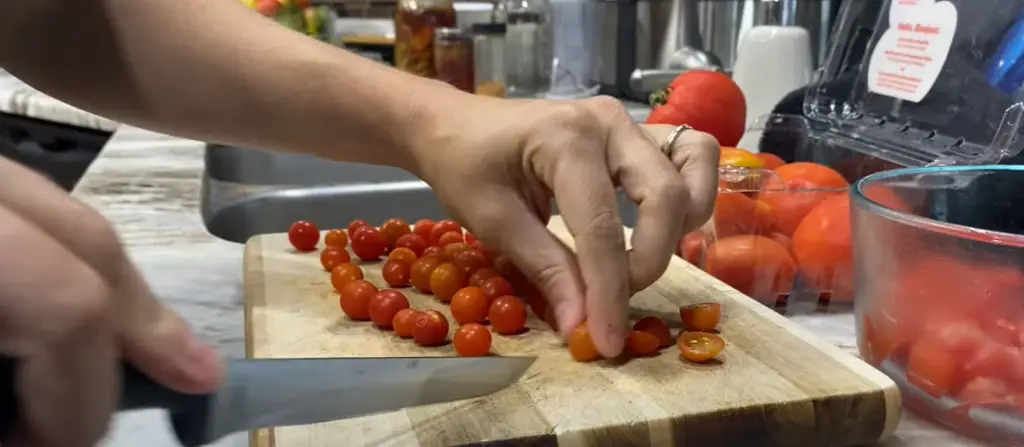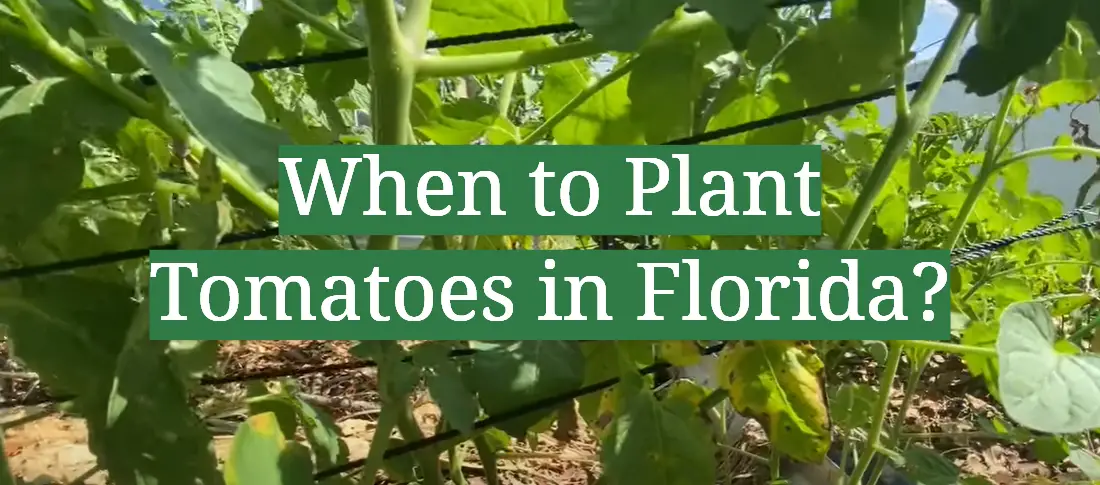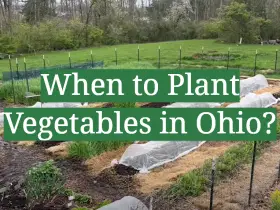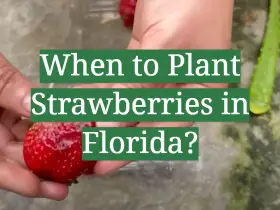Are you looking to get the most out of your tomatoes in Florida and don’t know when you should start planting? Growing tomatoes in Florida is a great way to enjoy delicious produce with friends and family, but getting it right involves knowing enough about the local climate to hit your optimal planting window. Here we take an in-depth look at all that goes into figuring out when the best time for you to plant tomatoes so that they reap the greatest yields possible.
How to Select the Best Tomatoes to Plant?
Tomatoes are a favorite garden vegetable that can be grown easily in most parts of the world. The key to success when planting tomatoes is choosing the right variety for your climate and soil conditions. Here are some tips for selecting the best tomato plants:
- Select Heirloom Varieties – Heirloom tomatoes have been around for generations, and may have a better flavor than hybrid varieties. They are also open-pollinated, meaning you can save the seeds from year to year for even more options for planting. [1]
- Consider Your Climate – Certain tomato varieties are better suited to specific climates and growing seasons. Generally, early season tomatoes do best in cooler climates, while late season tomatoes thrive in warmer areas.
- Consider Your Soil – While some tomato varieties can adapt to most soil types, others prefer more acidic soils. If you have heavy clay or sandy soil, choose a variety that is specifically designed for that type of soil for the best results.
- Choose Disease-Resistant Varieties – Many tomatoes are susceptible to diseases like blight and cracking. Choose tomato varieties that are resistant so you can enjoy a larger harvest with less effort.
- Consider Your Growing Space – If you have limited space, cherry tomatoes or bush varieties may be the best choice as they require less room to spread out and grow. If you have more space, consider growing indeterminate varieties which will produce throughout the season but need support in order to stay upright. [2]

The Most Delicious Tomatoes Varieties
Tomatoes are one of the most popular vegetables in the world. With so many different varieties to choose from, it can be difficult to decide which type of tomato is best for you. Here are some of the most delicious and widely cultivated tomato varieties that can be found on farms or at your local grocery store:
- Beefsteak Tomatoes – These large, round tomatoes are one of the most popular varieties and are commonly used on burgers or in salads. They have a sweet flavor and juicy texture that makes them ideal for slicing and serving.
- Cherry Tomatoes – A smaller version of the beefsteak tomato, cherry tomatoes come in many colors such as yellow, orange, red, and even purple! They are a great snack option and add great flavor to a variety of dishes.
- Roma Tomatoes – Also known as plum tomatoes, these red, oval-shaped fruits have fewer seeds than other varieties and are perfect for canning or making sauces. They also make a great addition to salads and sandwiches.
- Heirloom Tomatoes – Heirloom tomatoes are a unique variety that come in many different shapes, sizes, and colors. They offer an intense flavor that can’t be found in other tomatoes and make a great addition to any salad or sandwich.
- Grape Tomatoes – These small yet sweet tomatoes have recently become popular due to their versatility and convenience. Their mild flavor makes them great for snacking, as well as for adding to salads and sandwiches.
- Green Tomatoes – Green tomatoes are unripe tomatoes that can be served either fried or in a salad. They have a tangy flavor and crispy texture that makes them stand out in dishes.
- Yellow Tomatoes – Yellow tomatoes have a mild and sweet flavor that makes them great for adding to salads or sandwiches. They are also popular for canning and making sauces. [3]
Is Florida’s Climate Suitable for Growing Vegetables?
Florida’s sunny and warm climate makes for great growing conditions for many vegetables, particularly during the fall and winter months. During the summer months, when temperatures soar, it can be difficult to keep plants healthy in the heat. This is why Florida gardeners often choose to plant heat-tolerant varieties such as tomatoes, squash, okra, and peppers. For other vegetables, such as lettuces and greens, it can be beneficial to grow them in the fall so that they can take advantage of cooler temperatures. [4]
Finally, Florida’s unique climate provides gardeners with a whole range of different pests and diseases to contend with. While some gardeners may find this daunting, proper pest management can help you keep your garden healthy and bug-free. By paying attention to the type of pests that are common in your area, and taking steps like introducing beneficial insects or using natural remedies such as neem oil, you can make sure your vegetable plants get off to a good start. [5]

What is the Best Time to Grow Tomatoes in Florida?
Florida is an ideal place for growing tomatoes due to its warm, sunny climate. Tomato plants need plenty of sunlight and warmth in order to produce a good crop of fruits and vegetables. As such, the best time to grow tomatoes in Florida depends largely on the variety you are planting.
For most varieties, late spring or early summer is typically the best time to start planting tomatoes in Florida. Temperatures should be warm enough for the plants to develop healthy roots and begin producing fruit. You may want to wait until at least three weeks after your last frost of the season before planting any tomato varieties, as this will ensure that you do not experience any further cold weather damage during the early stages of growth.
It is also important to consider when the last frost of the season is expected in your area. If you live in a colder part of Florida, you may need to wait until late spring or early summer before planting any tomato varieties. However, if you live in a warmer region of the state, it may be possible to plant tomatoes earlier in the year.
When deciding on when to plant tomatoes in Florida, it is also crucial to consider the amount of water needed for successful growth. Tomatoes require regular watering throughout the growing season, so make sure that you have access to an adequate source of irrigation before planting any varieties. Additionally, it is wise to choose varieties suited to your climate and soil type in order to ensure optimal results. [6]

Tips for Successful Tomato Planting in Florida
There are several tips that should be followed when planting tomatoes in Florida. Here are some of the most important ones:
- Choose the right variety – Different tomato varieties have different needs and requirements. Some require more sun, while others need more water. Make sure to select a variety that is appropriate for your climate and soil conditions.
- Plant in warm soil – Tomatoes prefer warm soil, so wait until after the coldest part of winter has passed before planting your seeds or transplants.
- Plant in full sun – Tomatoes need at least six hours of direct sunlight per day. If you don’t have a place to plant that gets this much sun, consider planting in planters or containers that can be moved around to ensure adequate sunlight exposure.
- Water regularly – Tomatoes require plenty of water, so make sure to give your plants regular waterings. Water deeply, but don’t allow the soil to become waterlogged or saturated.
- Mulch properly – Mulching helps to retain moisture, reduce weeds, and protect the soil from extreme temperature changes. Use organic mulch such as straw or shredded leaves.
- Prune your plants – To keep your tomato plants healthy and productive, pruning should be done regularly throughout the growing season. Remove any diseased or dead foliage and shape young plants by pinching off the main stem to encourage lateral growth.
- Fertilize – Tomatoes need plenty of nutrients to stay healthy and productive, so make sure to feed your plants with a balanced fertilizer. Follow directions on the label for best results.
- Control pests and diseases – Monitor your plants regularly for signs of pests or disease problems such as tomato blight or aphids. Treat any problems promptly with an appropriate pesticide or fungicide as needed.
- Harvest regularly – Tomatoes should be harvested as soon as they are ripe to ensure the best flavor and texture. Once you start harvesting, keep picking regularly to promote additional fruit production. [7]
How to Pick and Store Tomatoes?
Tomatoes are an incredibly versatile fruit. They can be used in salads, sandwiches, sauces, and more. To get the best flavor and texture out of tomatoes, it is important to make sure you pick the right ones and store them properly.
When picking tomatoes, look for those that are firm without any soft spots or bruises. The skin should be smooth and evenly colored. Look for tomatoes that are heavy for their size, as this usually indicates a higher water content.
If you find that your tomatoes are ripening too quickly, you can place them in the refrigerator for a few days. The cold temperatures of the fridge will slow down the ripening process, allowing you to enjoy the tomatoes for longer. However, be sure to take them out of the refrigerator before they get overripe and mushy.
You can also freeze tomatoes for a longer shelf-life. To do this, blanch the tomatoes in boiling water and then shock them in an ice bath. After that, cut them into slices or cubes and place them into freezer bags or containers. Frozen tomatoes will keep up to 6 months in the freezer! [8]

What Diseases Can Tomatoes Suffer from?
Tomatoes may suffer from various diseases that can affect their growth and yield. The most common tomato diseases include blight, early and late blossom-end rot, fusarium wilt, leaf mold, mosaic virus, septoria leaf spot,verticillium wilt, bacterial spot, and anthracnose.
- Blight is caused by a fungus called Phytophthora infestans and is characterized by dark green spots that turn black or brown. The fungus can spread quickly, causing the entire crop to be destroyed if left untreated.
- Early and late blossom-end rot is caused by a lack of calcium in the soil which causes the end of the tomato to rot away from its natural form. This is usually accompanied by discoloration of the tomato skin.
- Fusarium wilt is caused by a fungus that attacks the roots, causing them to become weak and unable to support the plant properly. The leaves will yellow and eventually fall off and the plant may die if not treated in time.
- Leaf mold is an infection caused by fungi which causes large patches of gray or white mold on the leaves of the tomato plant. This can cause a decrease in yield and reduce the quality of the tomatoes.
- Mosaic virus is caused by a virus which affects the leaves, causing them to become mottled or yellowed. This virus can spread quickly so it’s important to remove any infected plants as soon as possible.
- Septoria leaf spot is caused by the fungus Septoria lycopersici and results in small spots on the leaves which can eventually cause the entire leaf to die.
- Verticillium wilt is caused by a fungus that clogs up the vascular system of the tomato plant, resulting in yellowing or wilting of the leaves. This can lead to reduced yields and, if left untreated, the plant may die.
- Bacterial spot is a disease caused by a bacteria which results in small spots on the leaves of the tomato plant. The spots can become larger and cause defoliation of the leaves. This can lead to reduced yields and quality of the tomatoes.
- Anthracnose is another fungal disease that causes dark lesions on the leaves, stems, and fruit of a tomato plant. This can lead to reduced yield and poor quality tomatoes.
To prevent and control these diseases, it is important to practice good cultural practices such as crop rotation, sanitation, and proper spacing between plants. Also, use only certified seed as well as to monitor your plants regularly for signs of disease. If you do spot any diseases, it is important to remove and destroy any affected plants promptly. Chemical treatments are also available but should only be used as a last resort after all other options have been exhausted. [9]

FAQs
Can tomatoes be grown year round in Florida?
Yes, tomatoes can be grown year round in Florida due to the warm subtropical climate. Tomatoes are a popular crop choice for Florida gardens because they can thrive in both cool and warm weather conditions. Planting early varieties of tomatoes is recommended as these will produce fruits before the summer heat sets in. Additionally, choosing tomato plants that have been bred for disease resistance and heat tolerance can help to ensure a successful harvest. Finally, providing supplemental irrigation during the hotter months will help to keep tomatoes growing and producing fruit throughout the year.
What is Florida’s tomato season?
In Florida, the tomato season typically runs from March through October. During this time, tomatoes are harvested and sold in many local markets across the state. Tomatoes grown in Florida tend to have a unique flavor compared to other varieties, making them a popular choice among chefs and home cooks alike.
The tomato season also coincides with the warm summer months, making it an ideal time to use tomatoes in outdoor grilling and barbeque recipes. Tomatoes are a versatile ingredient that can be used in everything from salads to sandwiches, sauces, salsas, and more. They can also be eaten raw for a refreshing snack or cooked down into delicious sauces.
Is Florida too hot to grow tomatoes?
No, Florida is actually an excellent place to grow tomatoes. The warm and humid climate of the Sunshine State makes it ideal for cultivating a variety of tomato varieties – from beefsteak and cherry tomatoes to heirloom and indeterminate varieties.
In order to successfully grow tomatoes in Florida, there are several important factors that need to be taken into consideration. Firstly, it’s important to select the right varieties of tomatoes for the region as some may not do well in Florida’s climate. Additionally, tomatoes need to be planted in a sheltered area with plenty of sun and water – both of which are plentiful in Florida. Furthermore, farmers should pay attention to soil composition and apply fertilizer as needed.
How often do you water tomatoes?
Tomatoes require regular watering to stay healthy and produce a good crop. Generally, you should water tomatoes once or twice a week depending on the weather conditions and soil type. If you’re using raised beds, containers, or other types of planters, you may need to water more often than if you have in-ground plants.
When it’s hot and dry, tomatoes need more water. You should be sure to provide enough water so the soil is moist, but not soggy. Mulching around your plants can also help conserve moisture in the soil.
Don’t forget that tomato plants also need plenty of sunlight to thrive! Be sure to place your plants in a sunny spot for at least six hours each day. If you’re growing tomatoes indoors, you may need to supplement with artificial lighting in order to get the right balance of light and water for your plants.
Useful Video: Top 5 Tomato Varieties That Will THRIVE in Your Florida Garden—You Have to See #5!
Final Thoughts
In conclusion, when it comes to deciding when to plant tomatoes in Florida, the answer depends largely on the climate and conditions in each particular region. Although spring is generally considered a good time for tomato planting due to the ideal soil temperature, many gardeners prefer to wait until the hotter weather of late summer or early fall. Ultimately, making sure your tomato plants are in an area with full sun exposure and plenty of water is most important for ensuring a successful harvest. Additionally, keeping an eye on local weather forecasts can help you select the best date for planting based on expected temperatures and rainfall levels. Knowing how much time you have available can also help determine if your tomato plants should be grown from seed or purchased as transplants. With the right attention and planning, you’ll have a bountiful harvest of delicious tomatoes throughout Florida’s growing season!
References:
- https://homegrown.extension.ncsu.edu/2021/09/selecting-the-best-tomato-varieties-for-your-garden/
- https://www.gardeners.com/how-to/selecting-the-right-tomato-variety/5259.html
- https://balconygardenweb.com/best-tasting-tomatoes/
- https://www.lawnsandpalmsfl.com/4-tips-for-veggie-gardens-in-floridas-hot-summer/
- https://www.lawnmoregainesville.com/blog/12-best-vegetables-to-grow-in-florida
- https://www.floridayards.org/when-to-plant-tomatoes-in-florida/
- https://a-z-animals.com/blog/when-to-plant-tomatoes-in-florida-tips-for-your-garden/
- https://www.planetnatural.com/tomato-gardening-guru/harvesting-storing/
- https://minnetonkaorchards.com/tomato-plant-diseases/










Leave a Reply
View Comments